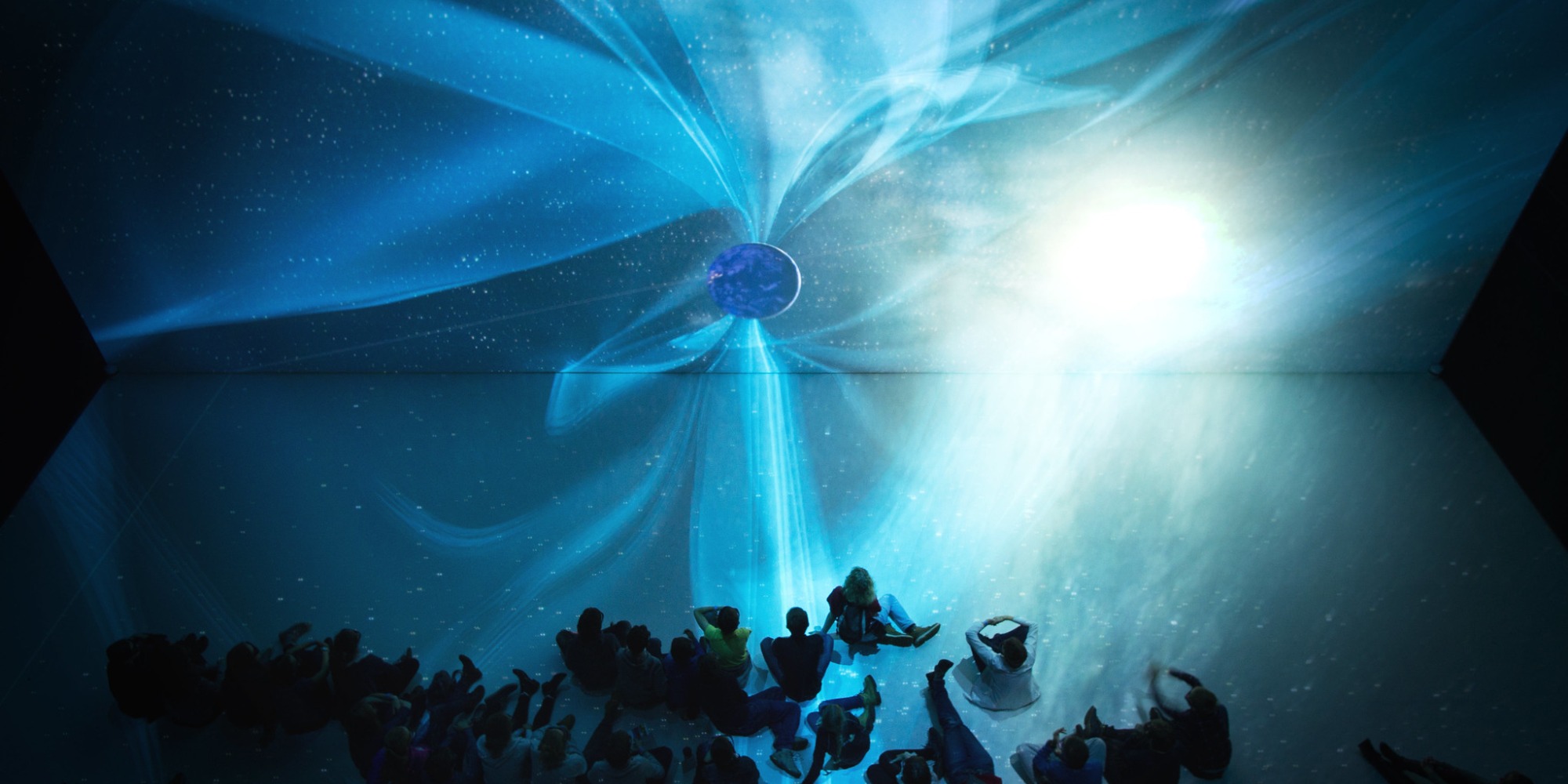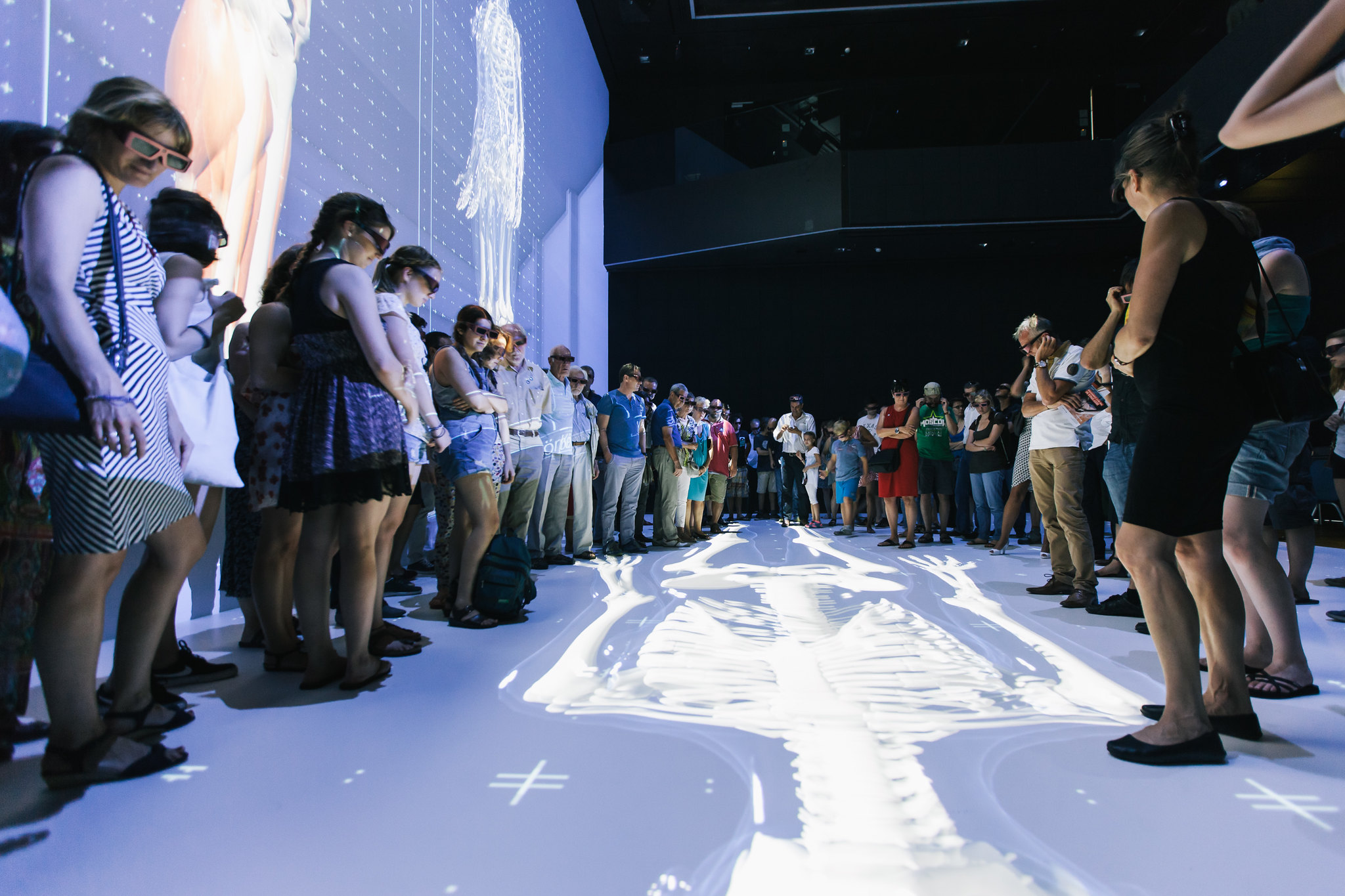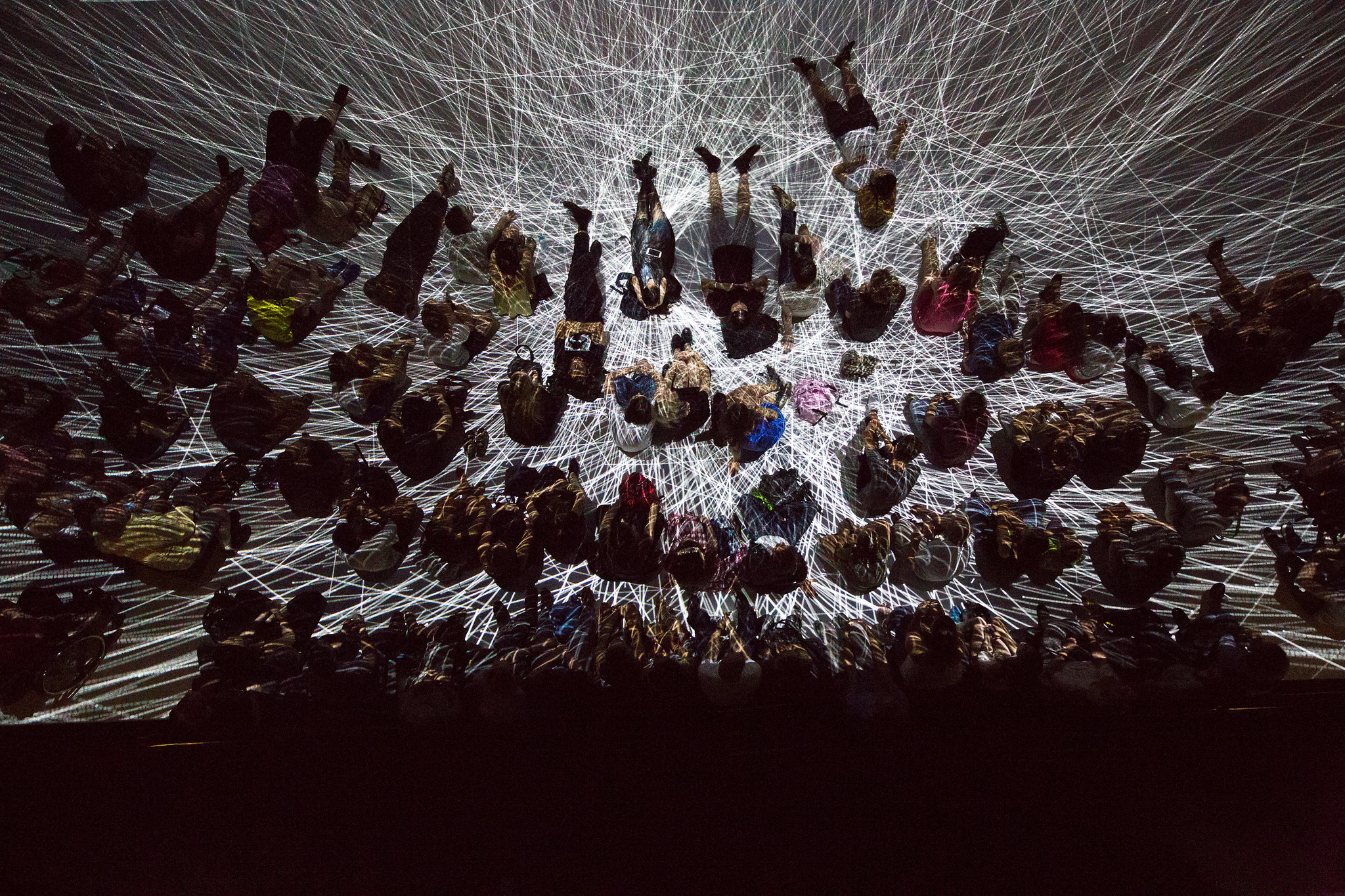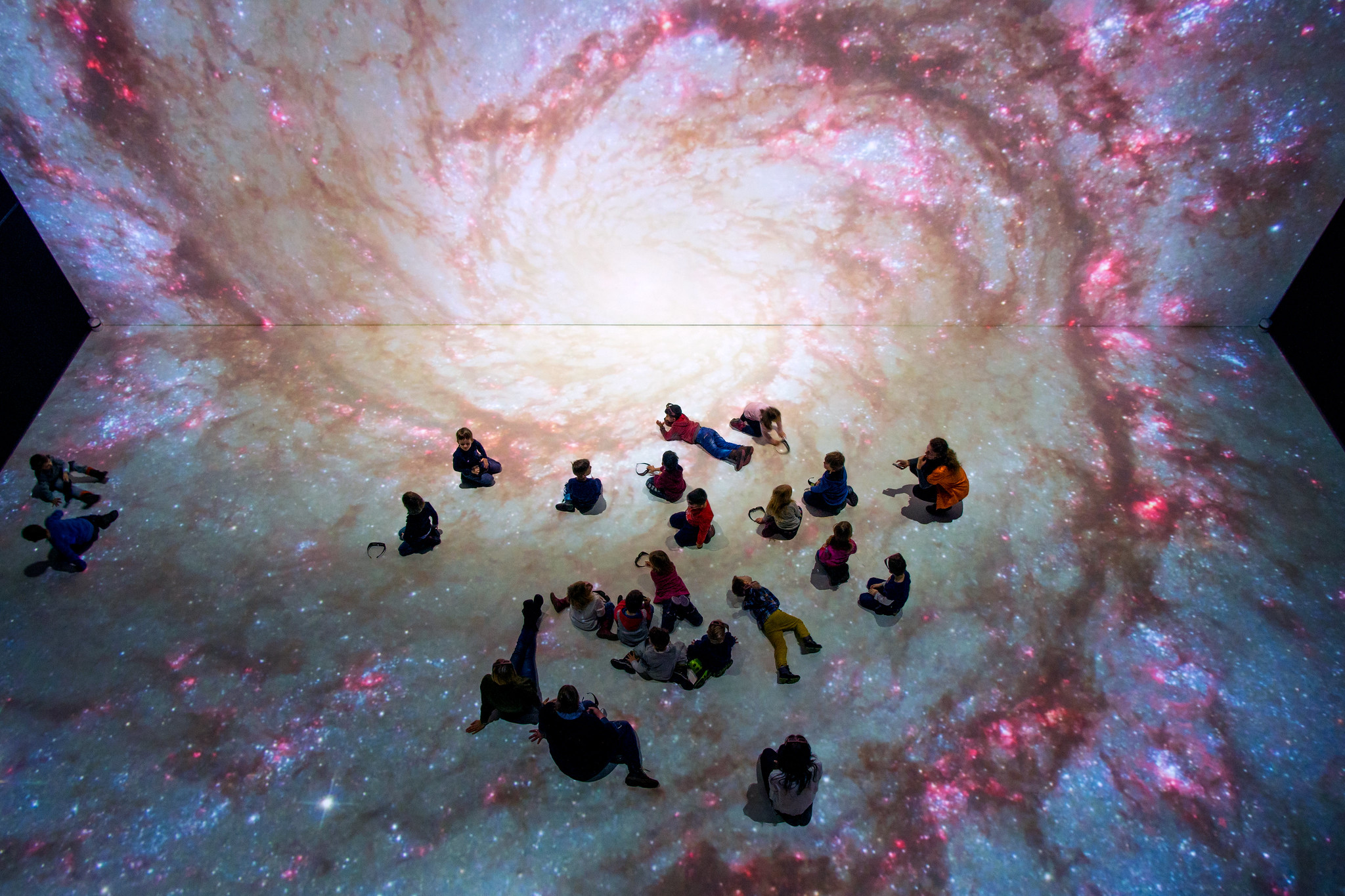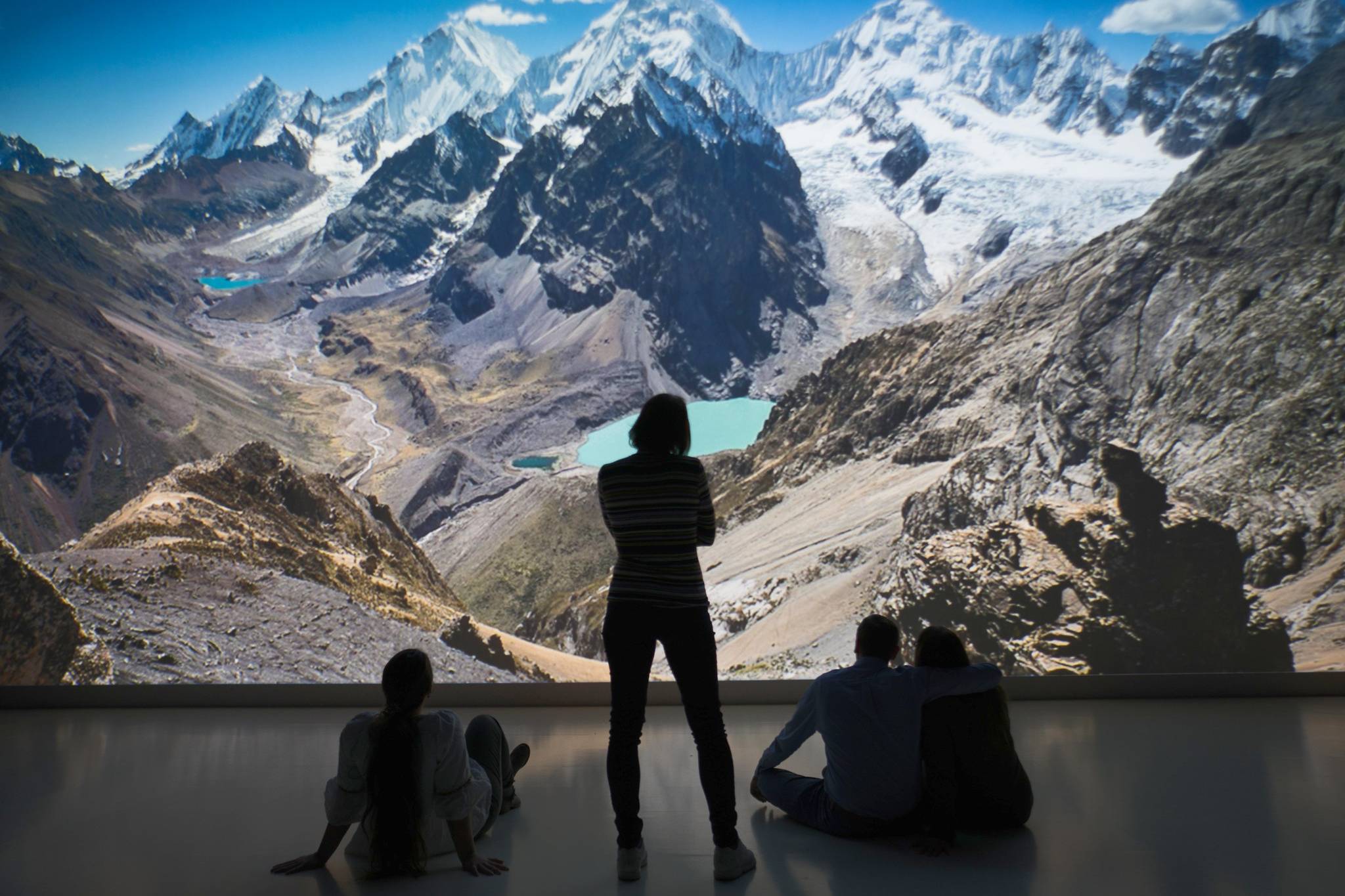The Deep Space 8K has received a major upgrade in 2022 – read all about the technical innovations as well as the latest programs on our Deep Space 8K EVOLUTION page!
The Deep Space 8K is not only a room in which breathtaking pictures and videos in 3-D can be shown with unmatched precision, but also a place at which it is possible to refashion the exhibited material.
The predecessor of the Deep Space, the CAVE of 9 square metres, was already a novelty in the field of three-dimensional visualization, an installment which gave visitors the feeling of not just being mere spectators, but being immersed in the world projected and enabled to interact with the environment. The advancement came with the opening of the new Ars Electronica Center in the year 2009, when the CAVE turned into Deep Space. Due to eight projectors which could work a 1080 HD resolution in active stereo, it was possible to project pristine pictures onto the wall and floor.
Since the reconstruction of the Deep Space in August 2015, the shown content has been projected in a resolution unseen by then. The pixelrate of 4096 x 2160, which is calculated 120 times per second respectively and sent via four separate lines to one of the four projectors, yield a compound picture. Over 4.2 billion times per second, a pixel is darting via those conduits. And this works for just one projection area — to operate both surfaces, floor and wall, with the new Deep Space the high power performance is double! Both systems are synchronized — the transport capacity of more than 23 GigaByte/Second is stunning.
The laser-tracking system pharus which was developed by Ars Electronica Futurelab staff members, including games exclusively programmed by students, allowed for an interaction of 30 persons max. Also lectures can be conducted more vividly by gesture-control. As the amount of moving pictures in this high resolution is scarce, the scientists of the Ars Electronica Futurelab started to look for ideal material and also worked out original contributions, in order to cover the new found potential. Consequently, a new Point Cloud Renderer for the Deep Space 8K was developed, by which you could resurrect ancient cities as a whole. Most of all, the domestically developed 3-D application Universum Mensch has become one of the early highlights in the year 2015.
Read more about the Deep Space 8K on the Ars Electronica Blog:

Deep Space 8K – The Next Generation
Sharper pictures, brighter colors and starker contrast are in store for visitors to Deep Space 8K. On August 7th Deep Space 8K premiered and guests immerse themselves in these extraordinary realms of imagery for the first time.
Further articles about Deep Space 8K: https://ars.electronica.art/aeblog/en/tag/deep-space-8k/
Programm of Deep Space 8K at AEC: https://ars.electronica.art/center/en/exhibitions/deepspace
Photos of Deep Space 8K: https://www.flickr.com/photos/arselectronica/albums/72157671978821105/
Credits
Roland Aigner, Andreas Bauer, Florian Berger, Marianne Eisl, Martin Gössweiner, Roland Haring, Horst Hörtner, Gerold Hofstadler, Peter Holzkorn, Andreas Jalsovec, Thomas Kollmann, Christoph Kremer, Juliane Leitner, Benjamin Mayr, Maria Mayr, Michael Mayr, Patrick Müller, Otto Naderer, Maria Pfeifer, Clemens F. Scharfen, Gerfried Stocker, Florian Wanninger
Special Thanks: Jens / Christie Digital; Robert Cicek / Ton&Bild
